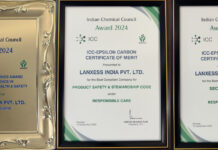In today’s digital world, building a positive image online has become essential for individuals and businesses alike. With the widespread use of social media, online reviews, and search engine results, your digital image can greatly impact your personal and professional success. To help you make the most of your online presence, here are the top 10 best practices for image building in the digital world.
1. Authenticity is key:
In the digital realm, authenticity is highly valued. Be genuine and transparent in your online interactions. Avoid creating fake personas or exaggerating your achievements. Authenticity builds trust and credibility, which are crucial for a positive digital image.
2. Consistent branding:
Whether you’re an individual or a business, having consistent branding across your digital platforms is essential. Use the same profile picture, handle, and logo across all your social media accounts, websites, and online profiles. Consistent branding creates recognition and helps establish a cohesive and professional image.
3. Professional profile pictures:
Your profile picture is often the first impression people have of you online. Make sure it’s professional, well-lit, and represents your personal or brand identity. Avoid using low-quality or inappropriate images that may negatively impact your image.
4. Thoughtful content creation:
The content you share online reflects your values, beliefs, and expertise. Be mindful of what you post and share. Create high-quality, engaging content that adds value to your audience. Avoid sharing controversial, offensive, or inappropriate content that may damage your image.
5. Engage with your audience:
Building a positive image in the digital world requires active engagement with your audience. Respond promptly to comments, messages, and reviews. Show appreciation for positive feedback and handle negative feedback professionally and constructively. Engaging with your audience demonstrates your commitment to building genuine connections and fosters a positive image.
6. Monitor your online presence:
Regularly monitor your online presence to ensure that your image is positive and accurate. Set up Google Alerts to receive notifications about mentions of your name or brand online. Monitor your social media accounts and respond promptly to any negative comments or reviews. Being proactive in managing your online presence helps you maintain a positive image.
7. Professional website:
If you’re an individual or a business, having a professional website is crucial for building a positive digital image. Your website should reflect your brand identity, showcase your expertise or products, and provide contact information. Make sure your website is well-designed, user-friendly, and mobile-responsive.
8. Online reputation management:
Your online reputation plays a vital role in your digital image. Regularly check your online reviews on platforms like Google, Yelp, or industry-specific review sites. Respond to reviews professionally, address any issues, and show appreciation for positive feedback. Managing your online reputation proactively helps you maintain a positive image and build trust with your audience.
9. Privacy settings:
Protecting your privacy online is essential for maintaining a positive image. Review and adjust your privacy settings on social media platforms to ensure that your personal information is secure and only visible to the intended audience. Avoid sharing sensitive or private information that could be used against you or your brand.
10. Professionalism in online interactions:
Finally, maintaining a professional tone and demeanor in all your online interactions is critical for building a positive digital image. Avoid engaging in online arguments or negative exchanges that can reflect poorly on your image. Be polite, respectful, and professional in all your interactions, including emails, social media comments, and forum discussions.
In conclusion, building a positive image in the digital world requires careful attention to authenticity, consistency, content creation, engagement, online presence, website design, reputation management, privacy settings, and professionalism. By following these best practices, you can establish a strong digital image that enhances your personal or brand reputation, fosters trust, and opens up opportunities for personal and professional success.



















